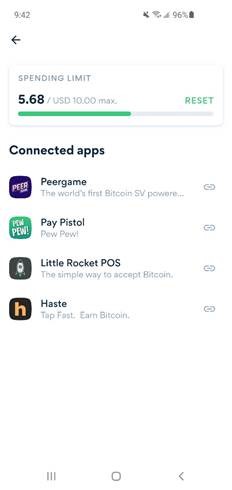HandCash Connect SDK is finally released
After many delays nearly a year after its initial announcement, the long anticipated HandCash Connect SDK is finally released to the public.
The Connect SDK has been advertised as a means for developers to ‘create better apps, faster’. As a developer myself I can confirm—I was able to integrate Login and Payments from SDK into Windbell in a matter of hours. (Coming Soon™).
Other integrations appear to corroborate the SDK’s ease of use as the following applications have integrated Connect in less than a month:
- Peergame
- PayPistol
- Twetch (also Coming Soon)
- Little Rocket POS
- Haste
Connect ships along with the controversial HandCash 2.5 ‘keyless’ update which leverages the Threshold Signature Scheme to allow multiple parties to partially sign a transaction. This update paved the way for the Connect SDK to process payments and cryptographic operations on the server side, making Connect a purely HTTP based toolset.
Such a move has pros and cons:
Pros
The immediate benefit is a significant performance boost.
Payments and signature operations are executed on the server side rather than on the client’s device as cryptographic operations in web browsers can take some time.
Since Connect is sending HTTP requests to a remote machine to do the Bitcoin ‘stuff’, users are not required to disable third-party tracking on their end as a requirement to use applications. This is a huge win as asking users to compromise their overall privacy just to use Bitcoin applications that supposedly do not track their data is beyond silly.
In HandCash 2.5, the Connect App Gallery is live where they can view all the applications they have granted permissions to, revoke access, and configure their spending limit.
Another powerful benefit is once users have granted permission to apps to spend on their behalf, payments can be executed without the user actively using the app or being online.
This feature paves the way for recurring payments, subscriptions and pay-per-second models like Cashport attempted, the first iteration of the Connect SDK.
Lastly, the ease of implementation of the SDK is a huge win for the ecosystem. While the integration may have some complexity due to the server-side aspects, functions can be called via high-level APIs that even non-coders can understand.
Until now developers have had to pass an ‘intelligence test’ due to the ‘Aussie man bad’ narrative to even arrive at Bitcoin SV (BSV). Next, they must learn about how to build with Bitcoin which includes but is not limited to: understand some cryptography, know what a SHA-256 hash is, learn some Bitcoin script, use raw hexes, validate transactions and so on.
The Connect SDK abstracts all the ‘nerd-stuff’ away, paving the way for newcomers to build easily and ship quickly.
Cons
Users of HandCash no longer hold the keys on their device so they must login leveraging 2FA (2-factor authentication) with an email and/or phone number. HandCash’s attempts to make a Bitcoin wallet ‘for the rest of us’ comes with trade-offs as some may find this a step backwards towards trusting third parties. If a user does not have a phone number, they cannot sign up for a HandCash wallet.
Users do not have control of their funds in case HandCash or partner servers go offline. HandCash insists they would still help users withdraw in this case:
Another ‘con’ is that while the SDK and smartphone wallet updates are live, we must wait a bit longer for the web wallet to be public. Connect integrations only work on mobile for now, which is a caveat to anyone itching to launch their integration to the public (hint*hint at the ‘Coming Soon’ above…).
Overall, the Connect SDK is a huge step forward for the space that will help bring new developers to BSV and help them hit the ground running. I look forward to more applications being built with the SDK and hopefully struggling to find time to use them all!
See also: HandCash’s Alex Agut discuss “Making Bitcoin Easy to Use for Everyone” at CoinGeek Live
Source: Read Full Article


